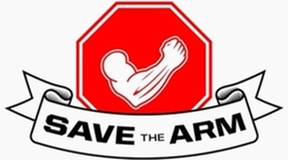What Is Chronic Kidney Disease (CKD)?
Chronic Kidney Disease or CKD is a serious medical illness affecting over 20 million persons in the United States.
The kidneys are organs that are primarily responsible for removing wastes from the body via the filtering and concentration of urine. The kidney has other roles as well such as the regulation of salt and water balance, the regulation of certain electrolytes such as potassium, phosphorous and magnesium and has a significant role in blood pressure control via it’s influence on the renin-angiotensin system. When the kidney is damaged over time, this disease is referrred to as Chronic Kidney Disease. Acute Kidney Disease is another form of kidney disease where the damage occurs very quickly. Acute Kidney Disease may be due to things such as infections, auto-immunne reactions or toxins. Chronic Kidney Disease, in contrast, is usually caused over time by chronic diseases such as diabetes, hypertension, medicines and arterial disease. Both Chronic and Acute Kidney Disease can create the need for eventual hemo-dialysis.
What Diseases and Conditions Can Damage the Kidneys?
Damage can occur to the kidneys due to diseases such as diabetes or hypertension or due to auto-immune disorders such as lupus or glomerulonepritis or due to disorders like an enlarged prostate, chronic or acute infections, tumors or kidney stones. There are various stages of Chronic Kidney Disease, based on severity of the damage. Damage to the kidney is generally estimated using a measure known as glomerular filtration rate or GFR. The lower the GFR, in general, the worse the damage to the kidney and the less the kidney is able to do it’s job of filtering and concentrating wastes.
When the damage becomes severe enough, wastes start to accumulate in the body as the damaged kidney becomes incapable of removing them from the blood. These wastes, if not removed can make people very sick and can lead to death if not corrected. Though medication, medical intervention, dietary and lifestyle changes can make a difference in many people with chronic kidney disease, in some people the disease progresses to the point that these interventions are insufficient.
When the kidneys can no longer filter wastes and either a transplant or dialysis is nescessary or imminent, this is referred to as End Stage Renal Disease (ESRD).
When The Kidneys No Longer Work, What Are The Options?
If medical treatment is not successful, hemodialysis or peritoneal dialysis eventually become the only methods other than a kidney transplant for the body to remove wastes. Of these two methods, hemodialysis is the most common. In order to receive hemodialysis, however, a large capacity vessel or access site must be created to allow the dialysis machine to be hooked up and clean the blood. There are three basic types of access.
What Are the Types of Access for Hemodialysis and Why Is it Important?
There are three basic types of access, however, the preferred type of access is the AV Fistula. The creation of an AV fistula is usually performed by a surgeon under general anesthesia and involves the connection of a vein in the forearm to an artery in the forearm. After the surgery, the vein and artery are allowed to mature. This process takes a period of several weeks to months. During the maturing process, the vein and artery enlarge and fuse together creating a large conduit where access can be easily achieved and that will support repetitive access and also allow enough blood flow to allow the dialysis machine a significant flow of blood to filter and clean. The AV fistula is preferred because it is the most stable, the least prone to infection and allows the most optimal method of dialysis access.
In order to have receive an AV fistula site however, the veins and arteries in the forearm and arm must be non-injured and capable of maturing. Interventions like PICC lines, IV’s and even needle sticks can injure a vein in a person with chronic kidney disease to the point that it can no longer be used to create an AV fistula. This is why it is so important to have a strategy that seeks to reduce the chance that injury or inadvertent needle sticks occur to the arm of patients with chronic kidney disease who may in the future need those vessels for the creation of a dialysis access site.
How Can Save The Arm (TM) Reduce Injury and Preserve Future Preferred Site Hemodialysis Access for Patients Who Need, May Need or are Already Receiving Hemodialysis?
Save The Arm(TM) encourages all patients and caregivers of patients with chronic kidney disease to have an early discussion about the importance of preserving vessels in an arm. Additional Interventions encouraged by Save The Arm(TM) include:
- Advising patients and their families as well as their medical caregivers of those with CKD about the importance of planning ahead by picking an arm for possible or likely future hemodialysis access, and guarding that arm against injury via IV, needle stick, PICC line placement or trauma. Hence the phrase, “Save The Arm”.
- Advising healthcare providers, clinics and hospitals, lab and phlebotomy services, healthcare systems and insurers and teams who provide services to patients with CKD about the importance of incorporating Save The Arm interventions into all of their pre-evaluation processes for phlebotomy, IV access and PICC line access and as well the avoidance of trauma for any reason to the arms of patients with CKD.
- Educating healthcare systems on ways in which to build standardized work processes that alert all staff members regarding the presence of a CKD patient and if a particular limb should be avoided in terms of IV access, PICC access and/or needle sticks and trauma.
- Awareness and advocacy campaigns
- Safety products that help to reinforce safe practices. Save The Arm(TM) produces the Alert Safety Tape(TM) product line and Alert Safety Sleeve(TM) and Alert Safety Tatoos (TM) product lines. These products serve to reinforce the safety required to assure patients the option of having future access options and drastically reduce the incidence of preventable injuries that might otherwise occur without these products.



